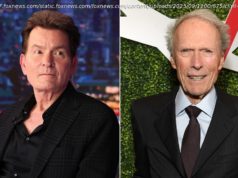Nicole Gonzalez Van Cleve says Chicago’s crime numbers are a crisis without a simple solution; any fix will come from research and resources, not Trump’s threats.
In a recently released book, » Wounded City, » Notre Dame sociologist Robert Vargas shows that Chicago’s violence has been exacerbated by local political gerrymandering. This political infighting means that some blocks within neighborhoods receive resources for violence prevention services while other streets in the same neighborhood are denied the infrastructure to prevent violence. The effects have been devastating. In addition, Vargas shows in startling detail that residents who come forward to report violent gang members suffer gravely for helping their communities. Gang leaders often respond by setting the informants’ homes on fire, with the Chicago police failing to pre-emptively protect these victims from retaliatory arson.
With an insult to all this injury, in March 2015, Illinois Gov. Bruce Rauner suspended violence prevention funding as well as gutted social services for the poor. In a sense, poor communities of color have been hit by a stream of violence on the one hand, and have been neglected by the local politicians elected to help them.
In contrast to this research, Trump’s campaign promises show that his approach to violence prevention is fueled by political posturing rather than empirical evidence. Throughout the campaign, Trump used Chicago as a political pawn to communicate his notion of law-and-order criminal justice policy and consistently conflated the notion of people of color with the inner city. He promised during the second presidential debate that he would be a president « for all of the people, African-Americans, the inner cities. »
Make no mistake, when Trump focuses on the « Chicago problem, » he is suggesting that black people, and the communities they live in, are « out of control. » This conflation becomes all the more disturbing when considering Trump’s approach to solving these issues. On June 29,2015, Trump sat down with the Chicago Tribune editorial board to discuss his approach to curbing violence: « Crime in Chicago is out of control. … You’re not going to stop it by being nice. You’re going to stop it by being one tough son of a bitch. »
Chicago is politically convenient for him. Trump uses it to stoke white fears about the specter of supposedly « dangerous » black people and uncontrollable city streets, positioning himself as the heavy-handed authoritarian who can reclaim order.
On the campaign trail in August 2016, Trump promised that he alone could stop the violence in Chicago » in one week » by being tougher. This rhetoric translated to a concrete policy recommendation to reinstate stop-and-frisk practices known to be racially biased and inefficient in stopping violent crime.
In New York, for example, (a case study that Trump inaccurately believes is a model for success) 90% of the people stopped by police were blacks and Latinos who had committed no crime. Of the few who were arrested, officers charged offenders with nothing more serious than possession of marijuana. These data reveal little about how such practices violate the rights of law-abiding people of color and erode trust between law enforcement and communities.
We all need to care about Chicago, but President Trump’s misguided get-tough approach to violence prevention reduces Chicago to a type of pawn for his political self-interest. If Trump is serious about providing federal assistance, it must come in the form of social services, improved education, job training, counseling and violence intervention services that supplement the work of police officers, the type of « help » that researchers agree will curb violence without denying people their dignity or rights.
This article has been revised and edited from a version that was published earlier.






